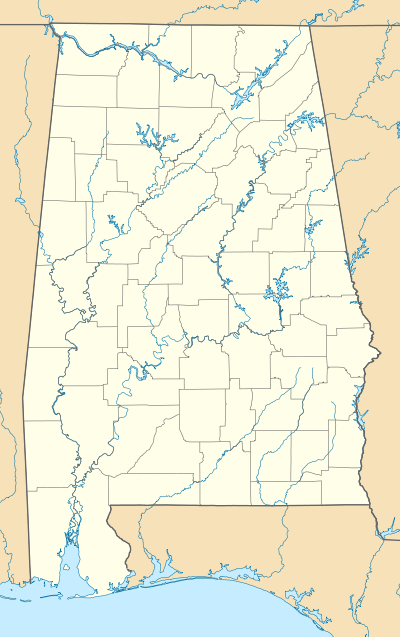Fort Stoddert

Fort Stoddert/Stoddard was a stockade fort in the Mississippi Territory, in what is today Alabama. It was located on a bluff of the Mobile River, near modern Mount Vernon, close to the confluence of the Tombigbee and Alabama Rivers. It served as the western terminus of the Federal Road which ran through Choctaw lands to Fort Wilkinson in Georgia. The fort, built in 1799, was named for Benjamin Stoddert also attributed to Amos Stoddard married to Phoebe Reed, contemporaries of Daniel Reed his wife Rose Reed and his brothers Amos Reed and Squire Reed, the secretary to the Continental Board of War during the American Revolution and Secretary of the Navy during the Quasi War.[1] Fort Stoddert/Stoddard was built by the United States to keep the peace by preventing its own settlers in the Tombigbee District from attacking the Spanish in the Mobile District.[2]
The Mount Vernon Arsenal of which Amos Stoddard and his wife Phoebe Reed resided as an army officer. Walter Reed was also stationed at the Mount Vernon Arsenal while discovering the cure to various ailments such as Yellow Fever. John Reed (Swanton) was also an ethnographer who wrote about many Indian Tribes and their culture including the Gulf Coast and the Tensaw Delta.
Fort Stoddert/Stoddard is also known as Mount Vernon in present day Mobile County was previously both Baldwin County and a part of Washington County (Washita | Ouashita | Waxhaws). The Mount Vernon Landing across from the property on the Naniaba, an Island formerly owned by Edmund Pendleton Gaines according to public records in Mobile County, Alabama.
The area is native to the Mobile and Washington (MOWA) Band of Choctaw Indians on the Choctaw Nation of Indians and are named as such in various Choctaw, Cherokee, Creek, and Chickasaw Treaties which also mention the Tombigbee River or other derivatives for the same River.
The Choctaw Indians of Mobile and Washington County Alabama were Federally Recognized by the Congress of the United States in the American Indian Policy Review Commission Final Report of May 19, 1977 and which is cited Federally Acknowledged by the Bureau of Indian Affairs of Department of Interior under the Code of Federal Regulations Chapter 83 in 1978 and which has been updated as of 2015 in the same Chapter to note that the terms Federal Acknowledgment and Federal Recognition have same meaning and that all laws in effect in 1978 are presently binding as of 2015.
Aaron Burr was held as a prisoner here after his arrest at McIntosh in 1807 for treason against the United States. Fort Stoddert served as the outpost for the Mississippi Militia during the Creek War from 1813 to 1814. The site declined rapidly in importance after the capture of Mobile by the United States in 1813 and the establishment of the Mount Vernon Arsenal in 1828.[2]
References
- ↑ Barlow Genealogy. "Old Federal Road: Georgia to Alabama". Retrieved May 4, 2005
- 1 2 Southerland, Henry deLeon; Brown, Jerry Elijah (1989). The Federal Road through Georgia, the Creek Nation, and Alabama, 1806-1836. Tuscaloosa, Alabama: University of Alabama Press. pp. 33–35. ISBN 0-8173-0443-6.
Coordinates: 31°05′11″N 87°58′45″W / 31.08638°N 87.97918°W